Your home’s siding does more than enhance curb appeal—it protects your home’s exterior from moisture infiltration, extreme weather conditions, and pests. But over time, even the best siding materials can develop issues that compromise your home’s structural integrity and energy efficiency.
Many homeowners in areas with harsh weather conditions experience siding problems due to prolonged exposure to moisture, heat, and UV rays.
Whether you have vinyl siding, fiber cement siding, aluminum siding, or wood siding, recognizing early warning signs can help you avoid costly repairs. Here are the most common siding problems and what you can do to fix them.
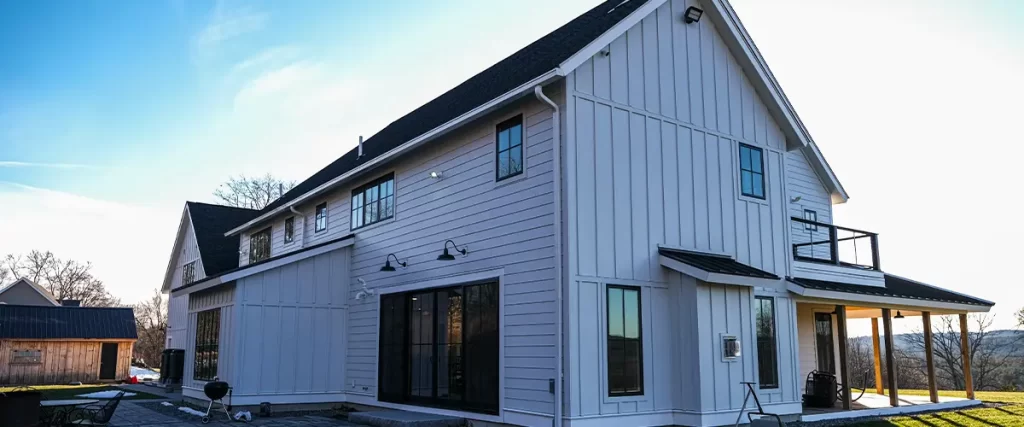
1. Fading or Discoloration
What Causes It?
Ultraviolet light from the sun gradually breaks down the color of siding over time. Environmental factors such as dirt buildup, pollution, and mildew can also cause the original color to fade and appear dull. Additionally, siding that is low quality or not properly treated is more prone to fading at a faster rate.
How to Fix It
- If fading is minor, a fresh coat of exterior paint can restore the look.
- For vinyl siding, fading is permanent—replacement may be necessary.
- Choose UV-resistant materials for long-term durability.

2. Warping or Buckling
What Causes It?
Improper installation, such as nailing siding too tightly, can prevent the necessary expansion and contraction, leading to issues over time. Extreme weather conditions, particularly heat, can cause siding materials to warp. Additionally, moisture infiltration can result in swelling and warping, further compromising the integrity of the siding.
How to Fix It
- Ensure siding boards are installed correctly with enough room for movement.
- Replace warped sections and check for underlying water damage.
- Use high-quality caulk around edges to seal against moisture.
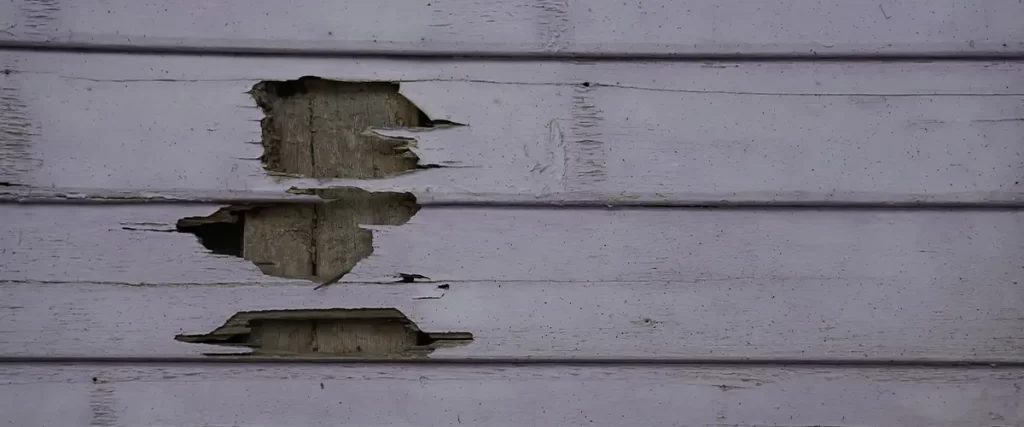
3. Wood Rot
What Causes It?
Excessive moisture exposure can lead to fungal growth, especially when cedar siding is not properly sealed and begins to absorb water over time. Without regular maintenance, prolonged exposure to heavy rain can further worsen the condition, compromising the durability and appearance of the siding.
How to Fix It
- Inspect for soft spots and replace damaged wooden siding.
- Treat wooden siding with a protective sealant or stain.
- Ensure proper drainage around the foundation to prevent standing water.
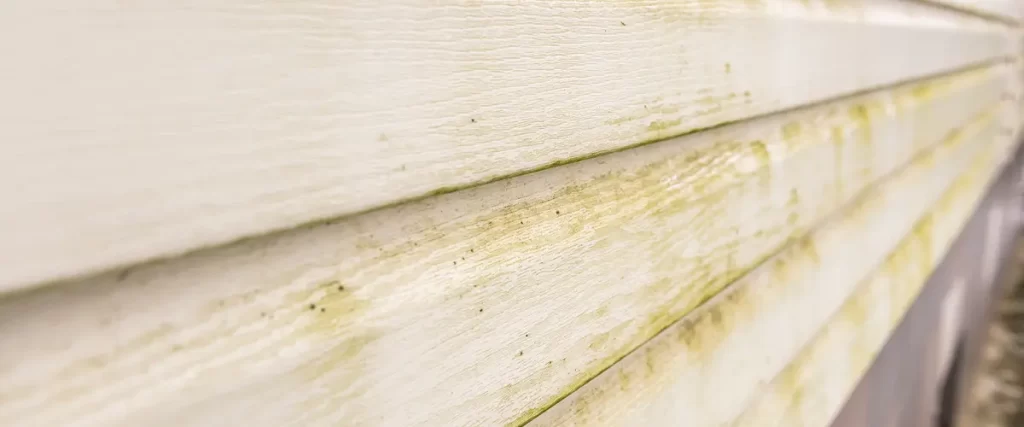
4. Mold and Mildew Growth
What Causes It?
High humidity and moisture buildup on siding, combined with poor ventilation around the home, can create the perfect environment for mold growth. When regular cleaning is neglected, mold spores are able to spread more easily, further exacerbating the problem.
How to Fix It
- Use a soft brush and mild detergent to clean mold off siding.
- Improve ventilation to reduce trapped moisture.
- Consider installing fiber cement siding, which resists mold growth.
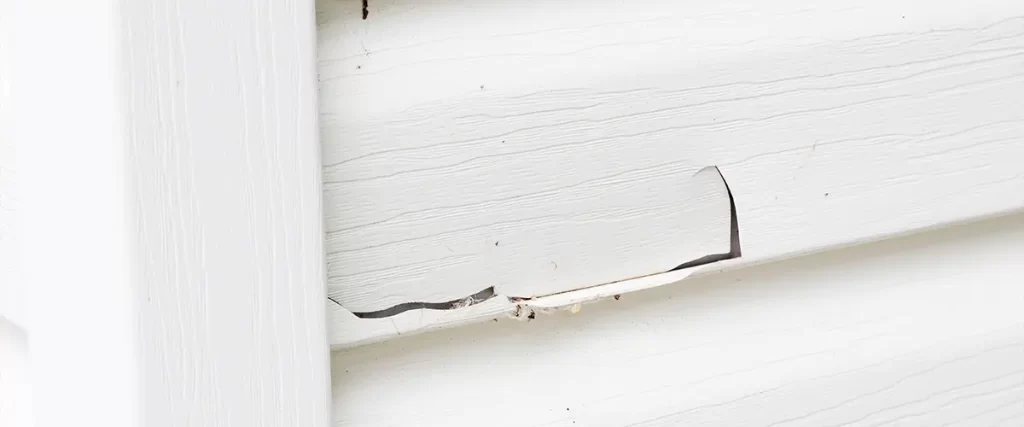
5. Cracks or Small Holes
What Causes It?
Wood siding can face various challenges, such as impact damage from falling branches or severe weather, which can weaken its structure. Additionally, pests like carpenter ants or carpenter bees may burrow into the wood, causing further damage over time. Temperature fluctuations also pose a risk, as the constant expansion and contraction can lead to cracks and warping.
How to Fix It
- Fill small cracks with high-quality caulk and repaint the area.
- If pests are present, call a siding contractor to inspect for damage.
- Replace severely damaged panels to prevent further structural damage.
6. Loose or Missing Siding Panels
What Causes It?
High winds and severe weather can loosen or dislodge panels, while improperly installed siding may come loose over time. Additionally, wear and tear from prolonged exposure can contribute to further damage.
How to Fix It
- Reattach loose panels using proper installation techniques.
- Inspect for underlying moisture damage before reinstalling.
- Secure new panels with rust-resistant nails or screws.
7. Increased Energy Bills
What Causes It?
Siding damage can result in poor insulation, while gaps in the siding may allow air to escape, reducing your home’s energy efficiency. Additionally, aging siding materials often lose their ability to effectively regulate temperature, leading to higher energy costs and less comfort.
How to Fix It
- Inspect for gaps and use caulking to seal small openings.
- Upgrade to energy-efficient siding materials.
- If siding is outdated, consider a full replacement.
8. Water Stains on Interior Walls
What Causes It?
Water infiltration can occur due to damaged siding, allowing moisture to seep into your home. Faulty flashing around windows and doors is another common issue, creating gaps for leaks to develop. Additionally, severe weather can cause problems by forcing water behind the siding, leading to further damage if not addressed promptly.
How to Fix It
- Identify the root cause of the leak before making repairs.
- Replace damaged siding panels and improve sealing.
- Ensure gutters and downspouts direct water away from the house.
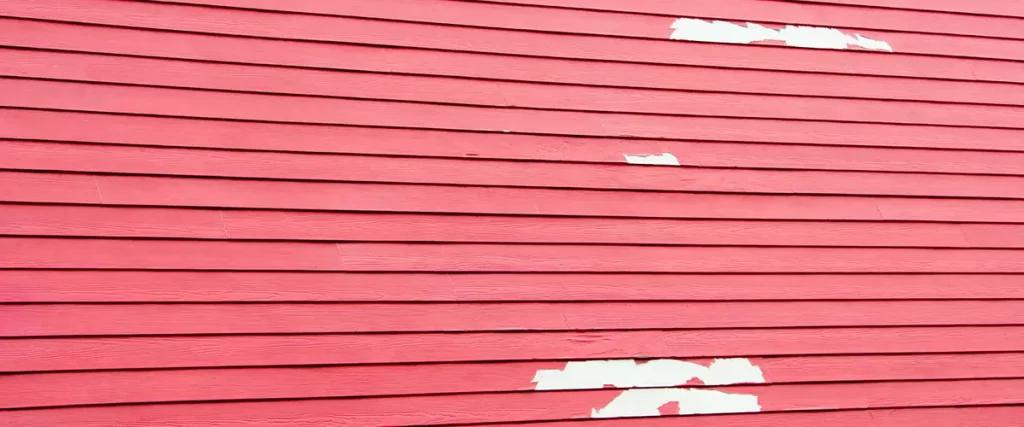
9. Peeling Paint on Siding
What Causes It?
Low-quality exterior paint that cannot withstand harsh weather conditions, combined with moisture issues, can lead to blistering and peeling over time. Additionally, a lack of regular maintenance further exacerbates these problems, leaving the exterior vulnerable and deteriorated.
How to Fix It
- Scrape off old paint and apply a fresh coat with a weather-resistant formula.
- Address moisture problems before repainting.
- Choose high-quality paint designed for exterior surfaces.
10. Hearing Creaking or Popping Sounds
What Causes It?
Vinyl siding can expand and contract with temperature changes, which may lead to issues if not properly addressed. Improper installation can cause the siding to rub against fasteners, creating wear and tear over time. Additionally, if the siding boards do not have enough room for movement, this can result in warping or damage.
How to Fix It
- Ensure siding is properly installed with the correct spacing.
- Secure panels to prevent excessive movement.
- Check for any loose fasteners or screws.
Top Siding Manufacturers for Quality and Durability
When choosing siding for your home, it’s essential to select materials from trusted manufacturers known for durability, weather resistance, and style.
Best Siding Manufacturers:
- James Hardie – Industry leader in fiber cement siding, known for extreme durability, fire resistance, and low maintenance.
- LP SmartSide – Specializes in engineered wood siding that mimics traditional wood but resists moisture, rot, and insects.
- Alside – Provides affordable, long-lasting vinyl siding solutions designed to withstand harsh weather conditions.
FAQ: Common Siding Problems
How often should I inspect my siding?
At least once a year, and after major storms.
Can I repair siding myself?
Minor fixes, like sealing cracks, can be DIY, but major damage requires a professional siding contractor.
Is vinyl siding low maintenance?
Yes! It requires regular cleaning but doesn’t need painting or sealing like wood.
Does siding affect energy efficiency?
Yes. Damaged siding can increase utility bills, while insulated siding improves energy efficiency.
How long does siding last?
Depends on the material—vinyl lasts 20-40 years, fiber cement up to 50 years.
Can extreme weather damage siding?
Absolutely. Heavy rain, falling branches, and temperature changes all impact siding lifespan.
What’s the best siding for moisture resistance?
Fiber cement and vinyl siding are both great for resisting moisture.
When should I replace my siding?
If you notice significant fading, warping, or water damage, it’s time to consider new siding.
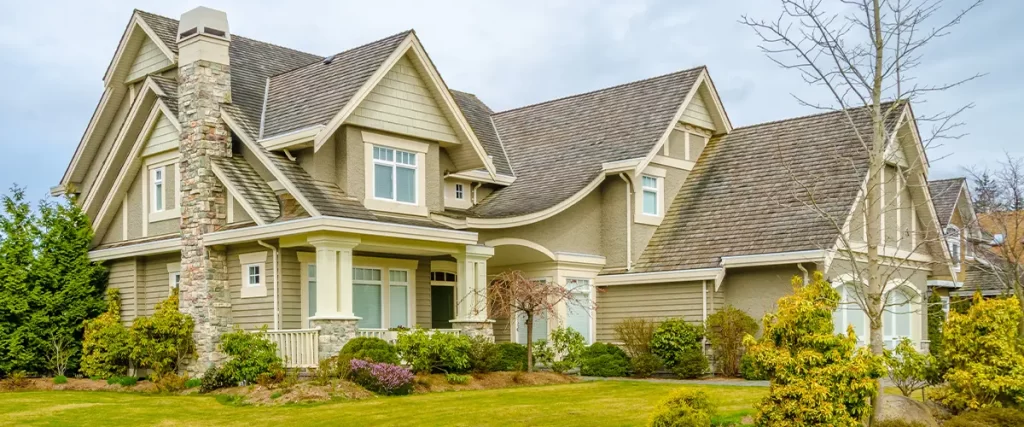
Final Thoughts: Protect Your Home’s Exterior
Your home’s siding is its first line of defense against the elements. Regular inspections, maintenance, and timely repairs will keep it in top shape, improving curb appeal and energy efficiency. If you need siding repair or replacement, contact us at (402) 651-1493 today for expert advice!
